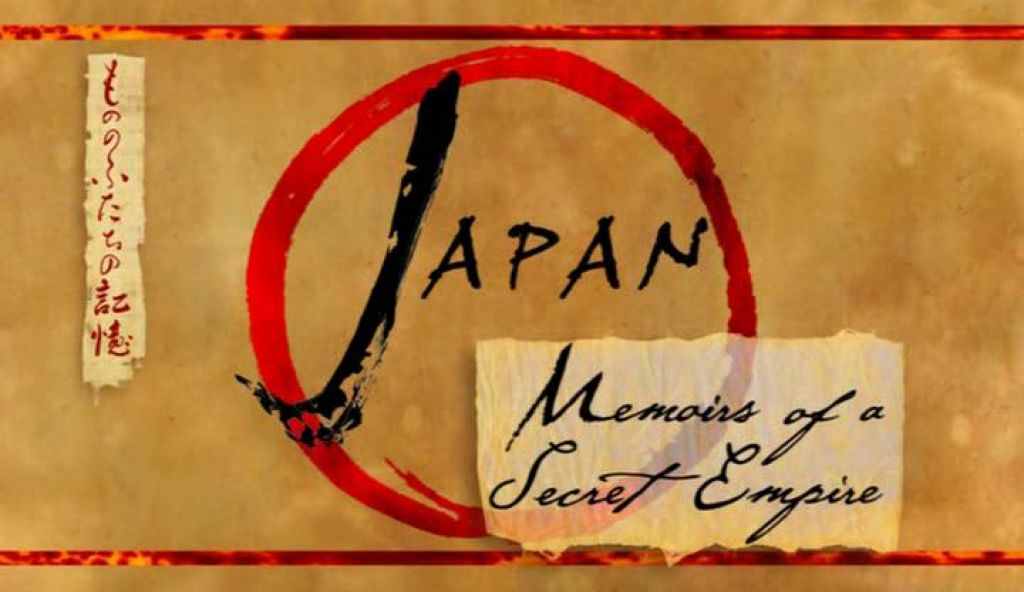Commanding shoguns and fierce samurai warriors, exotic geisha and exquisite artisans – all were part of a Japanese renaissance between the 16th and 19th centuries when Japan went from chaos and violence to a land of ritual refinement and peace.
But stability came at a price: for nearly 250 years, Japan was a land closed to the Western world, ruled by the shogun under his absolute power and control. Japan: Memoirs of a Secret Empire brings to life the unknown story of a mysterious empire, its relationship with the West, and the forging of a nation that would emerge as one of the most important countries in the world.
Episode One – The Way of the Samurai
In the early 16th century, Japan is a warlike society ruled by samurai and their daimyo warlords. When Portuguese merchants arrive in 1543, they are the first Europeans to set foot in Japan. Missionaries quickly set out to convert the nation to Christianity. In the same year, a samurai boy named Tokugawa Ieyasu is born to a low ranking daimyo family.
To prove his family’s loyalty to their ruling warlord, Ieyasu is given as a hostage where he remains for most of his childhood. When he is finally freed, he reclaims his family’s domain and allies himself with the most powerful rulers in Japan: Oda Nobunaga, and his successor, Toyotomi Hideyoshi. Hideyoshi awards him a small fishing village named Edo, later to be known as Tokyo, and provides him with a vast area to rule. But Hideyoshi and Ieyasu are uneasy allies.
On his deathbed, Hideyoshi, places Ieyasu in command until Hideyoshi’s true heir—his young son, Hideyori—will rule. When daimyo rebels challenge Ieyasu’s control, Tokugawa Ieyasu’s samurai armies defeat them at the Battle of Sekigahara. The victory brings to Ieyasu the title of shogun. Ieyasu’s only remaining obstacle for total control of Japan is Hideyori. In 1614, Ieyasu renounces his allegiance to Hideyori and attacks Osaka Castle, slaughtering more than 100,000. It is the beginning of a dynasty that will endure for more than 250 years.
Episode Two – The Will of the Shogun
With Ieyasu in control, peace settles over Japan, and a new society based on the samurai ethics of obedience and loyalty is established. In 1600, William Adams becomes the first Englishman to set foot in Japan. Impressed by European trading vessels, Ieyasu asks Adams to help him build his own fleet. Aware that the English have no interest in converting the Japanese to Christianity, Ieyasu decides to expel the Portugese and Spanish who often combine missionary work with trade.
As Shogun, Tokugawa Ieyasu has united the daimyo warlords. When he dies at 72, his vision of a strictly controlled class system based on the rule of the samurai is a reality. But his grandson, Iemitsu, will rule more harshly. With no wars to fight, Iemitsu tightens control over the power of the daimyo and their restless samurai armies.
Foreign missionaries have been expelled from Japan, but still Iemitsu fears the influence of Christianity. Impoverished peasants and persecuted Christians explode in anger. The Shimabara Rebellion in 1637 results in the deaths of thousands. In order to prevent further dissention resulting from foreign influence, Iemitsu closes Japan to the western world. It will be more than 200 years before the nation will open its doors again.
Episode Three – The Return of the Barbarians
By 1690, Japan is a nation completely isolated from the western world, and a time of cultural flowering and intellectual pursuit ensues. Shogun Tsunayoshi introduces his Laws of Compassion protecting the poor and preventing the abuse of animals. By the 18th century, Edo has become the largest and one of the liveliest cities in the world, attracting samurai, geisha, courtesans, merchants, writers and actors. The classes begin to mix, and culture and commerce flourish.
However, conflicts simmer beneath the surface of Edo society. As ruling daimyo warlords and their samurai armies grow restless, interest in Western science increases, complicating the policy of isolation.
In 1853, Commodore Mathew C. Perry and his squadron of black ships sail into Edo Bay, and demand that Japan negotiate and trade with the United States. Japan is in a precarious position and the government faces the difficult choice of war or negotiation. Realizing they are powerless to repel American might, the Japanese negotiate treaties with the West. Ten years later, the samurai class is disbanded and the Tokugawa Shogunate ends. The modern era of Japan has begun.



